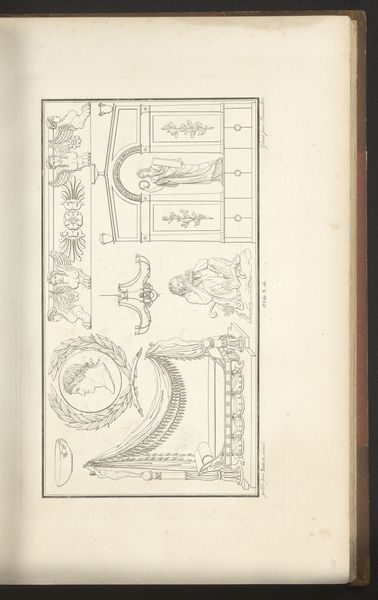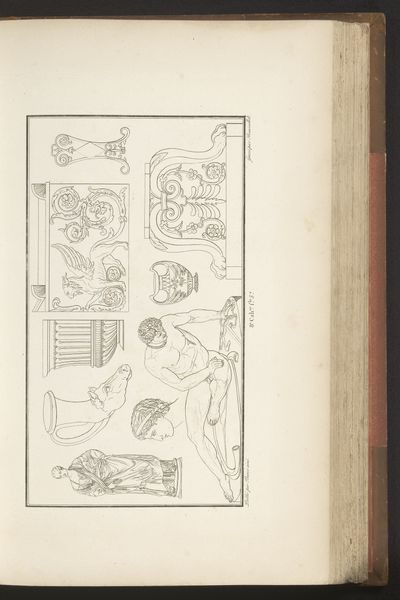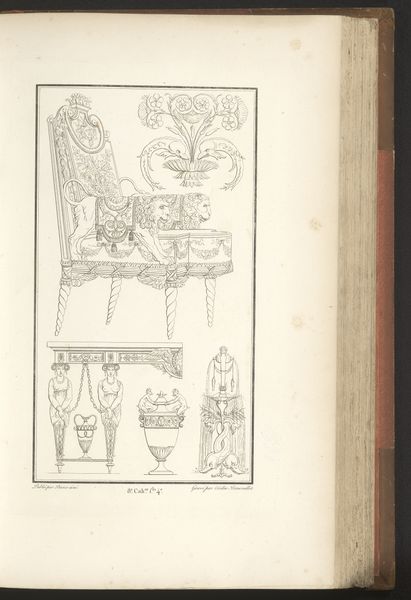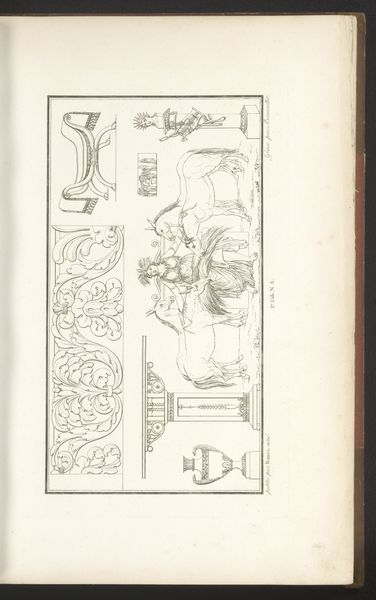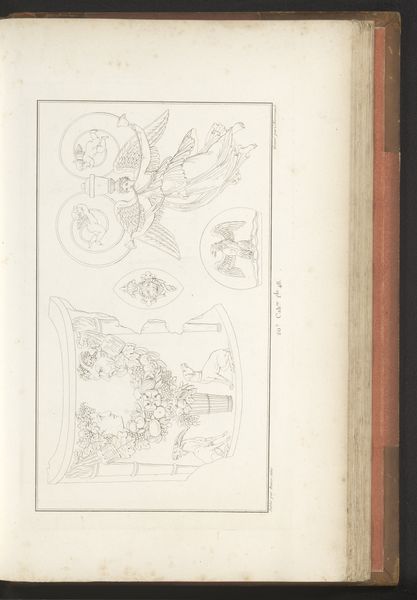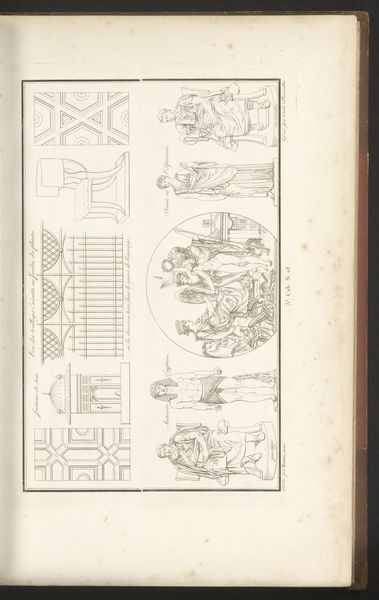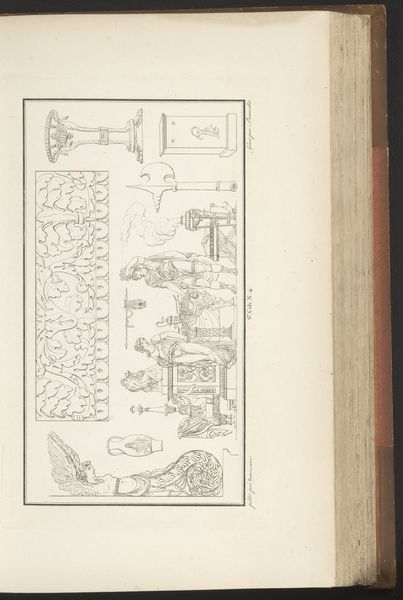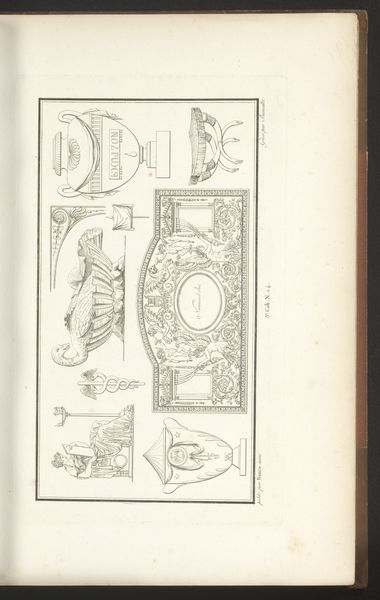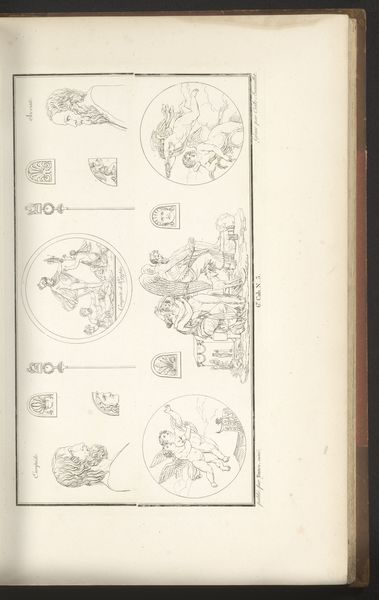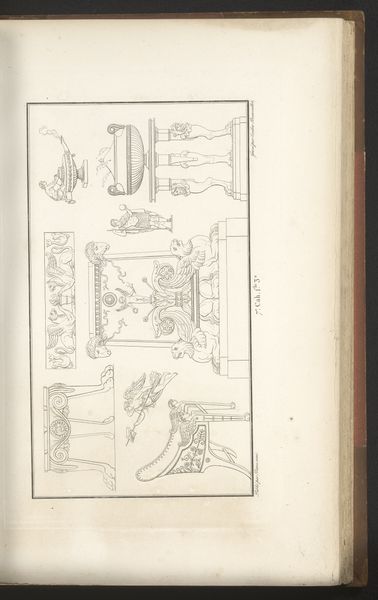
drawing, paper, ink
#
drawing
#
pen illustration
#
pen sketch
#
paper
#
form
#
ink
#
geometric
#
pen-ink sketch
#
line
#
pen work
#
decorative-art
Dimensions: height mm, width mm
Copyright: Rijks Museum: Open Domain
Editor: Here we have Pierre-Nicolas Beauvallet’s "Diverse meubels waaronder een tafel met griffioenen", a drawing from 1820 rendered in ink on paper. There's something delicate, almost skeletal, about the linear quality here. What stands out to you as you examine its construction? Curator: Well, focusing on the materials and production, what interests me most is the shift toward industrial production in furniture design that was brewing during Beauvallet's time. Ink and paper became crucial tools for disseminating design ideas. This wasn't about unique, handcrafted pieces; it was about the *idea* of furniture being reproduced on a larger scale. Do you see any evidence of this in the sketch? Editor: I guess the precision of the drawing suggests it’s intended as a guide or model, not just an artistic expression. Curator: Exactly! It speaks to a burgeoning culture of consumerism and the rise of a design-oriented middle class. Consider also the recurring motifs, like the griffins. These were fashionable at the time. The availability of prints like these meant more people could aspire to a certain aesthetic, further driving up demand. How does this relate to your understanding of fine art versus design? Editor: That’s a good question! I often see such a clear distinction. This drawing challenges the notion. I suppose "art" became more about accessibility. Curator: Indeed. Beauvallet's work invites us to reconsider the supposed hierarchies within the art world. We must consider his materials, the societal values reflected within his art, and the broader shift to the means of material production. Editor: So, we went from simply observing pretty pictures to deconstructing the social and economic processes that informed its making. This gives me much to think about. Thanks.
Comments
No comments
Be the first to comment and join the conversation on the ultimate creative platform.
